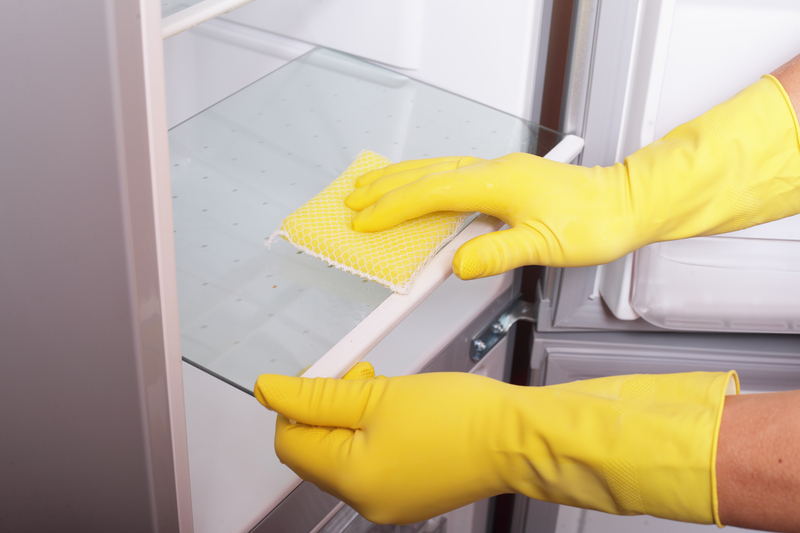Protect Your Home by Removing Mould on Window Sills: The Ultimate Guide
Mould growth on window sills is a common yet underappreciated issue in many homes. While it may seem harmless at first glance, this unsightly menace can impact not only the appearance of your living spaces but also your health and even the structural integrity of your home. In this comprehensive guide, we will explore how to protect your home by removing mould on window sills, why it's essential, tips for prevention, and much more.
Why Is Removing Mould on Window Sills Important?
Window sills provide a prime environment for mould growth due to their frequent exposure to moisture condensation, poor ventilation, and organic debris. Neglecting the presence of mould on window frames and ledges can result in a multitude of problems:
- Health hazards: Mould spores can trigger allergies, respiratory issues, asthma attacks, and other symptoms, particularly in children, elderly, and immunocompromised individuals.
- Aesthetic Damage: Black, green, or white patches on window trims degrade the overall appeal of your home's interiors.
- Structural Risks: Prolonged mould presence can cause wood rot, paint peeling, and permanent damage to sills and frames.
- Reduced Property Value: Homes with visible mould on windows can lose significant market value and deter potential buyers.

Identifying Mould on Window Sills: What to Look For
Before you can begin protecting your home, it's vital to accurately identify whether you have mould on your window sills. Mould can present in various forms:
- Fuzzy, dusty, or slimy patches in colors such as black, green, grey, or even orange.
- Musty, earthy odours concentrated near windows.
- Peeling paint or warped wood beneath the window ledge.
- Visible condensation or persistent dampness around windows.
Common Types of Mould Found on Window Frames
- Cladosporium: Appears black or green; often found on painted surfaces and wood.
- Aspergillus: Can be yellow, green, or black and thrives in damp environments.
- Penicillium: Blue or green in color and known for its rapid spread.
It's important to act quickly the moment you spot any of these signs in order to protect your home by removing mould on window sills efficiently.
The Dangers of Leaving Mould Untreated
Many homeowners mistakenly believe that a little mould on the window sill is no big deal. Yet, allowing it to linger can have lasting negative effects. Here's why immediate action is crucial:
- Health Risks: Continuous exposure to mould spores increases the risk of allergies, sinus congestion, skin irritation, headaches, and respiratory illnesses.
- Structural Damage: Window frames made of wood are especially susceptible to rot, warping, and even insect infestation as a result of prolonged moisture and microbial activity.
- Atmospheric Problems: Persistent mould can worsen indoor air quality, leading to a stuffy, unpleasant living environment.
- Spread to Other Areas: Left unchecked, mould can migrate from window sills to walls, ceilings, and even HVAC systems.
Preparation: What You Need Before Removing Mould from Window Sills
Proper preparation is the key to successfully removing mould on window sills and minimizing future recurrence. Here's a list of essential supplies:
- Protective Gear: Gloves, safety goggles, and a face mask to protect yourself from spores and chemicals.
- Cleaning Tools: Soft-bristled brush, non-abrasive sponge, microfiber cloths.
- Chemicals and Cleaners: White vinegar, baking soda, hydrogen peroxide, dish soap, or commercial anti-fungal sprays.
- Old Towels: To soak up excess moisture and prevent slip hazards.
- Plastic Sheet/Cover: To cover the floor and prevent contamination of other surfaces.
Should You Call a Professional?
If you discover a widespread or recurring mould problem, or if you have toxic black mould (Stachybotrys chartarum), it's wise to hire a certified mould remediation specialist. For limited and minor cases, you can often remove window sill mould yourself.
Step-By-Step Guide: How to Remove Mould on Window Sills
1. Assess the Mould Situation
Examine the extent of the mould growth. Is it a small patch or a large, entrenched colony? If it covers more than 1 square meter or if you suspect the presence of toxic mould, seek professional help.
2. Ensure Safety and Prepare the Area
- Wear gloves, mask, and goggles throughout the process.
- Open nearby windows for good ventilation.
- Lay a plastic sheet below the window to catch drips and debris.
3. Clean Off Loose Debris
With a dry brush or cloth, gently remove any visible dust, flaking paint, or loose mould. Dispose of these materials carefully in a sealed bag.
4. Apply a Cleaning Solution
- Mix a solution of one part white vinegar to one part water, or use 3% hydrogen peroxide for stronger cleaning.
- For natural cleaning, create a paste of baking soda and water for scrubbing stubborn spots.
- Never mix cleaning agents like bleach and ammonia - this produces toxic fumes.
5. Scrub the Affected Area
Apply your cleaning solution to the mouldy section. Let it sit for 10-15 minutes. Using a soft brush or sponge, gently scrub the area to dislodge mould colonies. Wipe up the residue with a clean, damp cloth.
6. Rinse and Dry Thoroughly
- Use plain water to wipe down the cleaned sill and remove any leftover cleaning agent.
- Dry the area extensively with a dry towel. Make sure no residual moisture remains--this is vital to prevent mould regrowth on window frames.
7. Disinfect and Dispose
- Dispose of all used cleaning cloths, sponges, and debris in a sealed plastic bag.
- Spray the area with an anti-fungal or anti-mould spray as a final protective measure.
How to Prevent Mould from Returning on Window Sills
Once mould is removed, the next step is making sure it doesn't make a comeback. Preventative measures will help you maintain a mould-free home and protect your property from damage.
1. Improve Ventilation
- Open windows regularly or use exhaust fans in kitchens and bathrooms.
- Consider using a dehumidifier in rooms with high moisture levels.
- Install trickle vents or window ventilators if possible.
2. Control Indoor Humidity
- Keep indoor humidity below 60%; ideal is 30-50%.
- Fix leaky windows and seal gaps that allow rainwater intrusion.
- Ensure window sills are sloped away from the glass to avoid water pooling.
3. Regular Cleaning
- Wipe condensation from window panes and sills daily, especially during colder months.
- Inspect and clean window frames and sills monthly to stop minor mould before it spreads.
4. Address Structural Issues
- Repair damaged caulking, cracked sills, or ill-fitting windows promptly.
- Repaint wooden sills with mould-resistant paint or sealant to protect exposed surfaces.

Natural vs. Chemical Methods for Mould Removal
Both natural and chemical methods exist for effective window sill mould removal. Understanding their pros and cons will help you choose what works best for your household:
- Vinegar and Baking Soda: Natural, non-toxic, inexpensive; effective for light to moderate mould buildup.
- Hydrogen Peroxide: Stronger anti-microbial agent; good for deeper stains but can bleach colored surfaces.
- Commercial Mould Removers (with bleach or fungicides): Fast and potent; suitable for persistent infestations but emits stronger fumes.
*Never underplay the importance of thorough drying after any cleaning operation, as moisture is the key enabler of mould growth on window sills.*
FAQs: Protecting Your Home by Removing Mould on Window Sills
1. Is black mould on window sills dangerous?
Yes, black mould can produce mycotoxins harmful to human health. It's especially risky for individuals with allergies, asthma, or compromised immune systems. Quickly clean black mould from window sills using suitable safety precautions.
2. Can I use bleach to clean window sill mould?
Bleach can kill surface mould but may not fully penetrate porous materials (like wood). Alternatives such as hydrogen peroxide or vinegar are effective and generally safer for both your family and surfaces.
3. How often should I check my window sills for mould?
It's wise to inspect and wipe down your window sills monthly, and more often during seasons with higher condensation or after heavy rain.
4. Does repainting window sills prevent mould?
Applying mould-resistant paint or sealant can significantly reduce future mould development, but it will not prevent it unless moisture issues are also addressed.
Conclusion: Take Action Today to Protect Your Home from Mould on Window Sills
While it may seem like a minor annoyance, removing mould from window sills plays a crucial role in keeping your living environment healthy, attractive, and structurally sound. Armed with the information above, you can take proactive steps to eliminate existing mould, prevent its return, and safeguard your family's well-being.
- Prioritize routine maintenance to dramatically reduce your risk of mould regrowth.
- Address ventilation and humidity issues for lasting protection.
- Act promptly at the first sign of mould for the easiest, most effective solutions.
With the right approach, you can ensure your home remains a safe, comfortable place year-round--all by the simple act of protecting your home by removing mould on window sills.
Don't wait for mould to become a bigger, costlier problem. Start safeguarding your property today!
```

